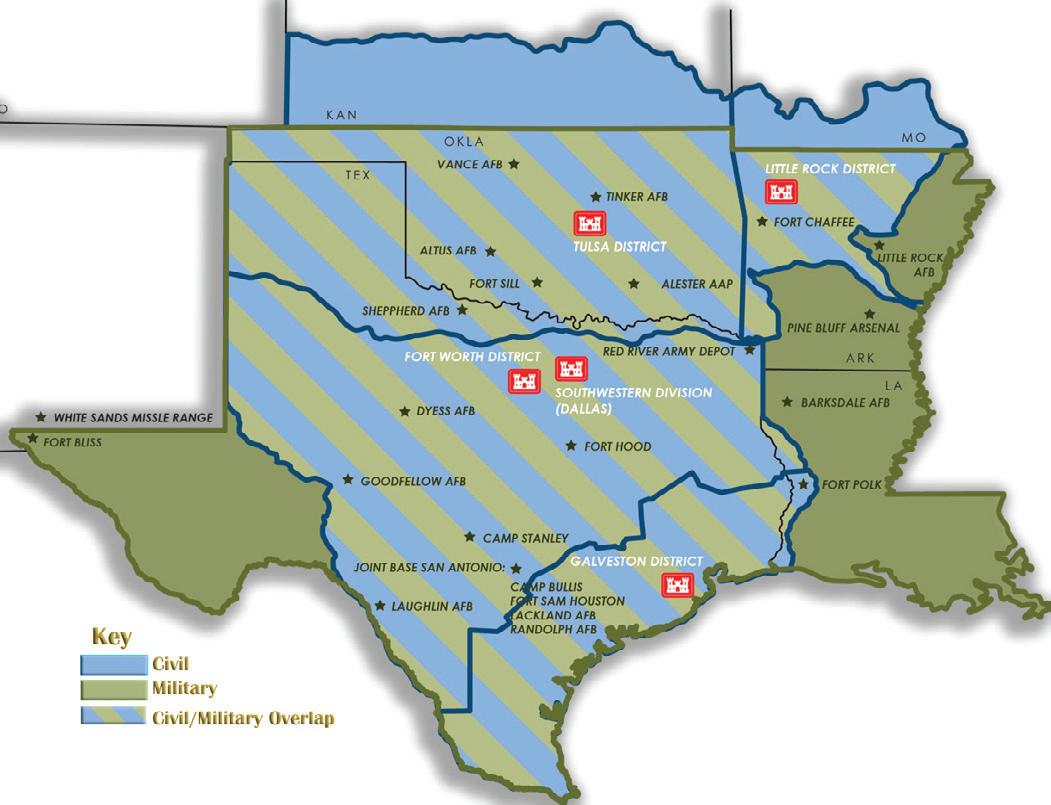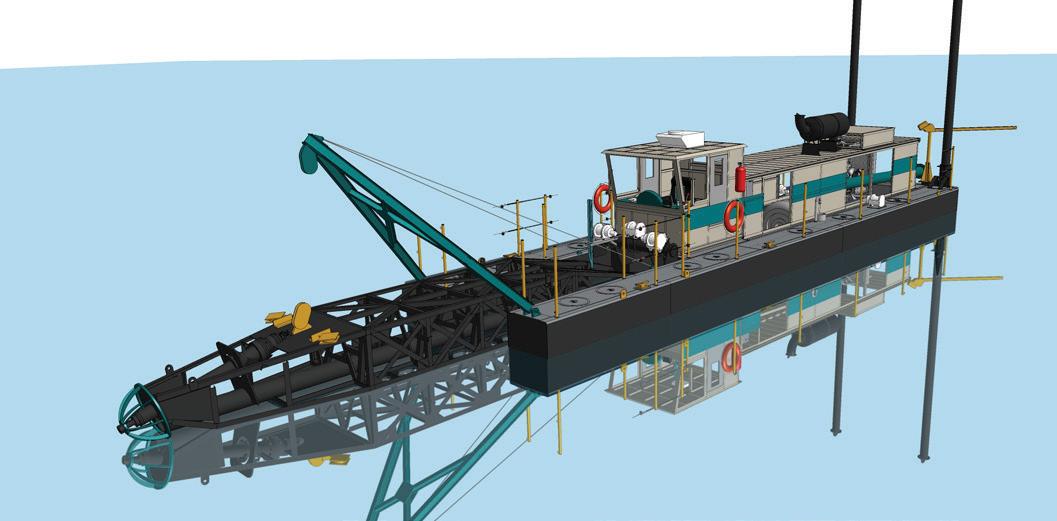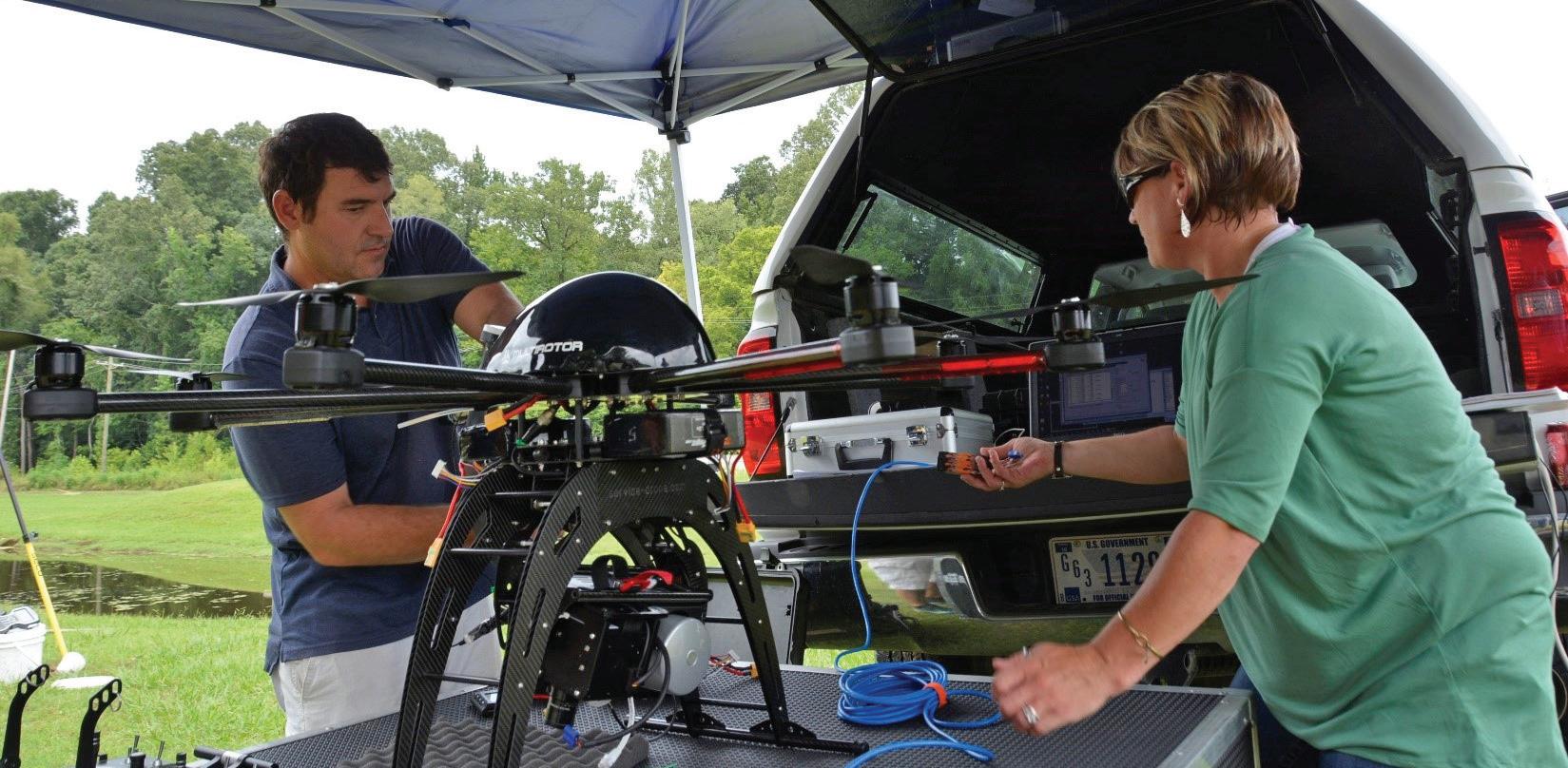
1 minute read
CHICAGO DISTRICT CIVIL WORKS REALIGNMENT
from U.S. Army Corps of Engineers: Building Strong, Serving the Nation and the Armed Forces, 2020-2021
GREAT LAKES AND OHIO RIVER DIVISION
BY PATRICK BRAY, Chicago District
Advertisement
The U.S. Army Corps of Engineers (USACE) adjusted its Civil Works Program boundaries within the Great Lakes and Ohio River Division (LRD) in 2020 to sustain a healthy workload across USACE.
At midnight March 29, 2020, the division transferred to the Chicago District:
• the Lake Michigan watershed within the state of Wisconsin;
• the upper Wabash River watershed in the state of Indiana; and
• the upper Kankakee River and Iroquois River watersheds in the state of Indiana.
The Mississippi Valley Division (MVD) transferred:
• inland waterways infrastructure within the existing Chicago District boundaries; and
• the headwaters of the Illinois River, including the remainder of the Fox and Kankakee rivers’ watersheds. Additionally, a new construction design team will be established within the district.
In total, the Chicago District grew from about 4,000 square miles to more than 31,000 square miles.
A balanced workload will provide continued program sustainability within LRD and MVD. All districts will be positioned as sustainable, healthy organizations, providing high value to the nation.
In the 1970s, USACE found the general public increasingly reluctant to support large-scale projects. Toward the end of the decade, this reluctance began to be reflected in a declining workload for the Chicago District. In 1980, after a significant reorganization study initiated by USACE, Chicago District activities in Illinois outside of the metropolitan area transferred to the Rock Island District and activities in Wisconsin moved to the Detroit District.
The realignment of the Chicago District addresses a workload imbalance and ensures all districts remain sustainable and healthy organizations. Approximately 30 personnel who live and work in the Chicago metropolitan area now find their district headquarters a lot closer to home.
The goal is to have no adverse effects on employees, no reductions in pay, and no geographic relocations of personnel, and no negative cost or schedule impacts on projects. Individual employees in Illinois, Indiana, and Wisconsin will report to the Chicago District. Still, they already live and work in these states.











